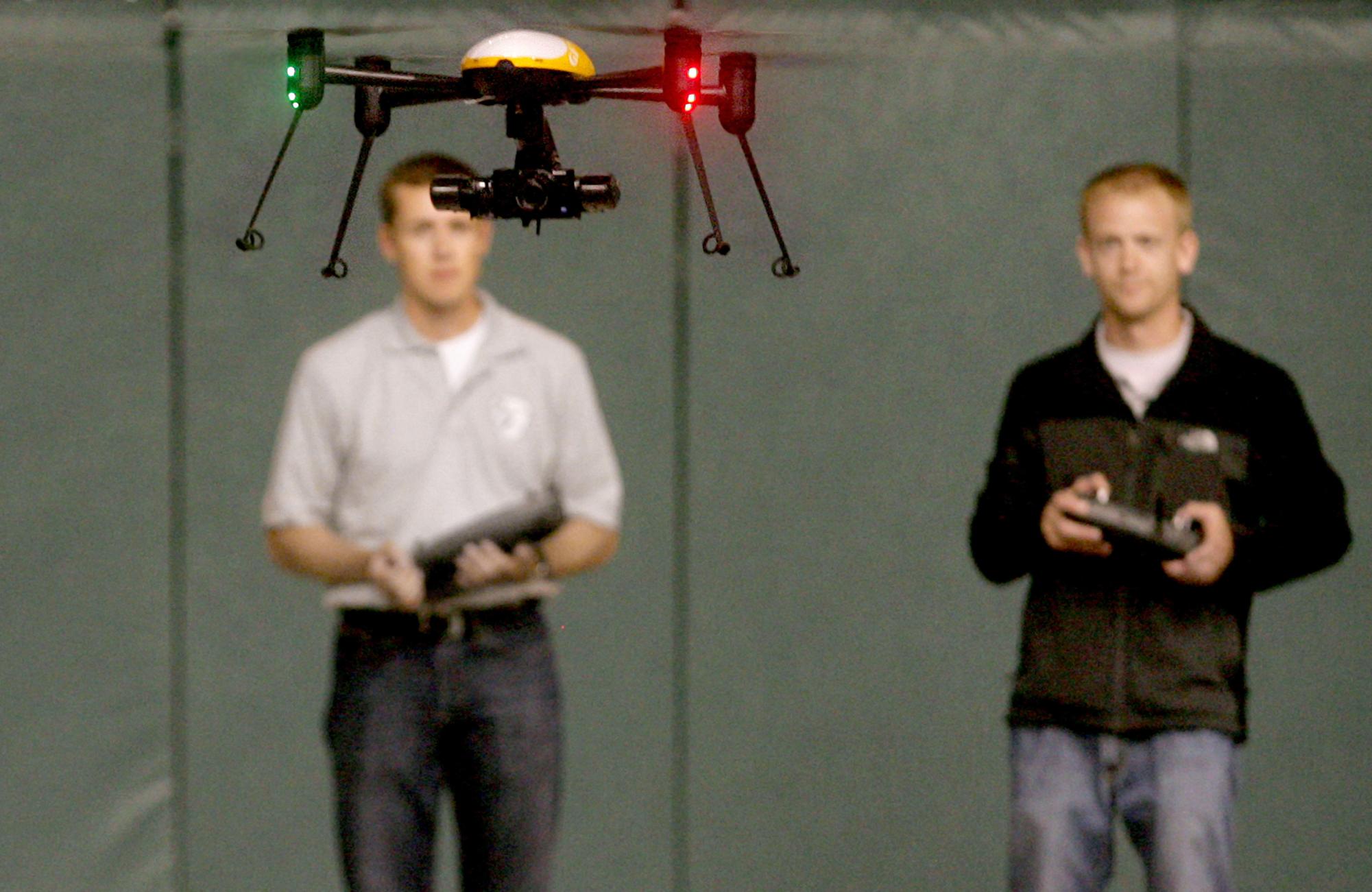As Yahoo News reports, “It sounds like something you’d see in a satirical ad in a ‘Robocop’ movie,” which feels fitting for this story. The drones come from the Texas-based tech company Campus Guardian Angel, which aims to create drones that can be deployed via a silent alarm in schools when a shooting threat emerges.
Armed with pepper spray pellets and a glass breaker, the drones are not AI-controlled; they are remote-operated from Austin, Texas, and other locations. Cameras installed on the drones allow police to see what is happening as they arrive on the scene.
Indoors, the drones can reach speeds of up to 50 mph, making them a potential weapon in a worst-case scenario. Effectively, they can act as flying battering rams—like that one time you get hit in the head with a random basketball at recess in second grade.
The goal isn’t for the drones to single-handedly take down an assailant, but to hold out until authorities arrive to apprehend the suspect.
“In a school shooting, most of the deaths happen in the first 120 seconds,” says John Marston, CEO and Co-Founder of CQA, “so it’s really about how quickly you can get there to engage the shooter.”
Governor Ron DeSantis allocates $557,000 to test the drones in two school districts and a university in Florida. According to the company, “A box of six drones with all networking and response effects costs $15,000.”
“Schools need between three and fifteen boxes, sometimes more, depending on the size of the campus,” the company estimates, according to Yahoo News.
The plan sparks some debate, though it isn’t nearly as controversial as other topics commonly discussed alongside gun laws.
“It doesn’t help inside the schools,” says AP Psyche Teacher Coach Cook, “but if it’s a non-lethal deterrent outside of the schools, then it’s a step in the right direction.”


